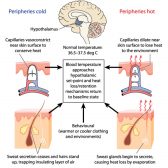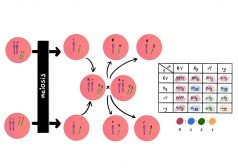Definition
noun
The transparent fluid secreted by the pancreas composed mainly of water, electrolytes, and enzymes
Supplement
The pancreas is a glandular structure of both the endocrine and the digestive systems of the body. It produces hormones such as glucagon and insulin that regulate sugar levels in the blood. It also releases pancreatic juice that aid in the digestion of large and complex biomolecules.
The pancreatic juice is a transparent fluid composed mainly of water (i.e. 99.5%).1 Its other essential components include the organic and the inorganic substances. The organic components include the pancreatic enzymes. The main pancreatic enzymes are pancreatic amylase (breaks down starch into sugars), pancreatic lipase (breaks down triglycerides into monoglycerides and fatty acids), and pancreatic proteases (e.g. trypsin, chymotrypsin, carboxypeptidase, and elastase that break down proteins and polypeptides into tripeptides and dipeptides). Other components include the nucleases that break down nucleic acids into nucleotides and various peptidases.2
The inorganic substances include cations (e.g. Na+, K+, Ca2+, Mg2+, and Zn2+) and anions (e.g. HCO3–), Cl–, and traces of SO42- and HPO42-).1 The high concentration of bicarbonate ions make the pancreatic juice alkaline, which is essential in neutralizing the gastric acid during enzymatic digestion of foodstuff.
The secretion of pancreatic juice is regulated by the release of secretin and cholecystokinin from the duodenum when cued by the presence of food components such as proteins, fats, carbohydrates, etc. Histologically, the darkly-staining cluster of cells called acini are the cells involved in the secretion of pancreatic enzymes. (The lightly-staining cluster of cells are the islets of Langerhans)
See also:
Reference(s):
1 Khurana, I. (2014). Medical Physiology for Undergraduate Students (2nd ed). Elsevier Health Sciences. p. 482.
2 Roberts, M., Reiss, M. J., & Monger, G. (2000). Nelson Thornes. p. 189.







